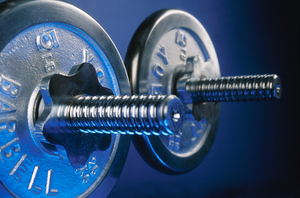Men, Exercise and Broken Bones

One of the problems that we all face as we get older is that unless we are careful, our bones can gradually become weaker. This is a particular problem in women, but a growing body of research indicates that men can run into trouble as well. At one end of the spectrum is “osteopenia:” a reduction in bone mineral density, and at the other end of the spectrum is full-blown osteoporosis.
The reason for taking the problem so seriously is that any degree of thinning of the bones can predispose us to so-called “osteoporotic fractures.” Sad to say, serious fractures are common among older people and can have devastating consequences, particularly if a hip is broken. Man people find it difficult to walk again. For years now we have recommended that women should take exercise to reduce the risk of thinning of their bones, particularly after menopause. But now research published in PLoS Medicine indicates that men who participate in sport or other vigorous activity may also reduce their risk of fractures.
Karl Michaelsson and colleagues at University Hospital, Uppsala, Sweden, report research in which over 2000 men who were initially studied in 1970-1973. The amount of physical activity that they took outside working hours was recorded, and then they were questioned again as they aged. Each of the surviving men was questioned again when they were aged 60, 70, 77, and 82. About half of the men were still alive at the end of the study, and the researchers recorded the number of fractures that the men had suffered during the 35 years of the study.
Based on the answers to the questions on physical activity at the start of the study, the researchers divided the men into three groups: those whose lifestyle was considered to be ”sedentary,” those whose leisure activities included some walking and cycling and those who participated in sports for at least 3 hours a week. These were referred to as the low, medium, and high-activity groups. Over the 35 years, 428 men had at least one fracture and 134 broke a hip. However, there were significant differences between the groups. 20% of the low-activity men had fractures, compared with 13% of those with medium activity and only 8% of those in the high-activity group. Of greatest importance was that the chance of having a hip fracture – the worst type of broken bone in an older person – was dramatically reduced by increased activity.
The researchers conclude that taking exercise reduces the risk of osteoporotic fracture in men. Participating in sports seems to be particularly effective: they calculated that one-third of fractures could be prevented if men could be persuaded to take part in sports regularly.
There is also an excellent summary by Harri Sievänen and Pekka Kannus from Tampere in Finland. As always each entire article is available online.
And I am to get my running shoes this very instant…






